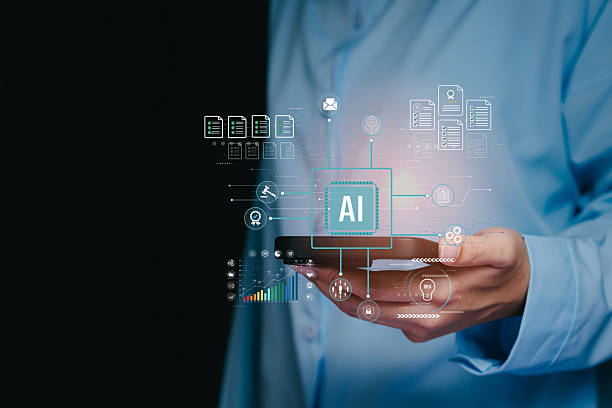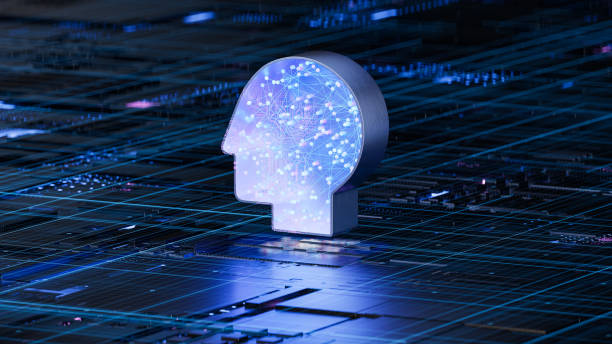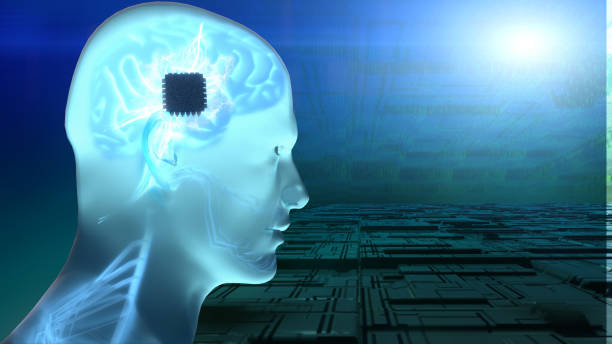What is an Artificial Intelligence Robot? A Comprehensive Definition
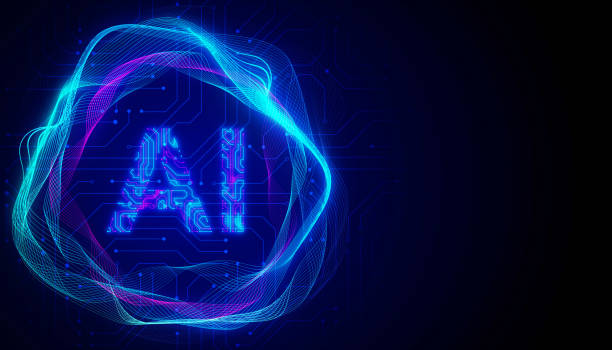
An artificial intelligence robot is a combination of two advanced technology fields: #robotics and #artificial_intelligence.
These robots are machines that, using complex algorithms and machine learning models, are capable of performing tasks that traditionally require human intelligence.
These tasks include understanding natural language, recognizing patterns, making decisions, solving problems, and even creativity.
In simpler terms, an artificial intelligence robot tries to imitate human cognitive abilities and act independently and automatically.
These robots can exist physically (like industrial or service robots) or virtually (like chatbots or voice assistants).
The key point is that they use artificial intelligence to process information, learn from experiences, and adapt to their surroundings.
These capabilities allow artificial intelligence robots to be used in a wide range of industries and applications, from manufacturing and healthcare to customer service and education.
For example, an artificial intelligence robot in a factory can perform repetitive and dangerous tasks with high accuracy and speed, while a chatbot can answer customer questions and solve their problems.
Also, an artificial intelligence robot in the medical field can assist doctors in diagnosing diseases and providing appropriate treatments.
As a result, the artificial intelligence robot, as a powerful tool, has great potential for improving efficiency, increasing productivity, and enhancing the quality of life.
Are you tired of missing out on business opportunities due to not having a professional company website?
Rasaweb, with its professional company website design, helps you:
✅ Build a powerful and reliable image of your brand
✅ Turn website visitors into loyal customers
⚡ Get a free consultation now!
The Difference Between Traditional Robots and Artificial Intelligence Robots
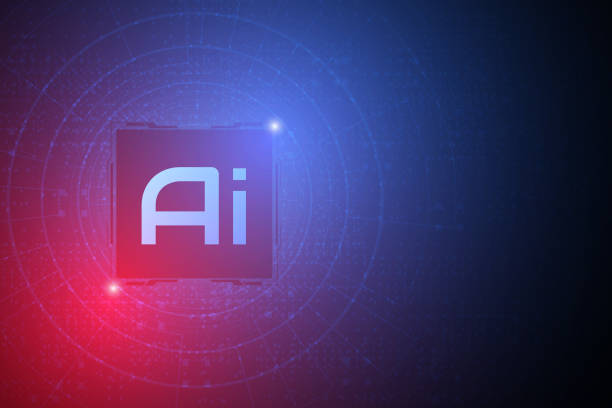
The fundamental difference between traditional robots and artificial intelligence robots is in their level of #autonomy and #flexibility.
Traditional robots are machines that are programmed to perform specific and pre-determined tasks.
They usually follow specific instructions and are unable to adapt to new situations or solve unexpected problems.
For example, an industrial robot designed for welding parts can only perform this task and cannot automatically react to changes in the production process.
In contrast, an artificial intelligence robot uses artificial intelligence algorithms to understand its surroundings, learn from experiences, and make decisions.
These capabilities allow them to act independently and respond to changes in conditions.
For example, an artificial intelligence robot in a warehouse can automatically find its way among the shelves, identify the required items, and deliver them to their destination.
This robot can use sensors and image recognition algorithms to identify obstacles and avoid colliding with them.
In short, traditional robots are designed to perform specific and repetitive tasks, while artificial intelligence robots are designed to solve complex problems and adapt to dynamic environments.
These differences allow artificial intelligence robots to be used in a wider range of applications and have greater potential for transforming various industries.
Artificial intelligence robots are a growing technology with a bright future.
Main Components of an Artificial Intelligence Robot
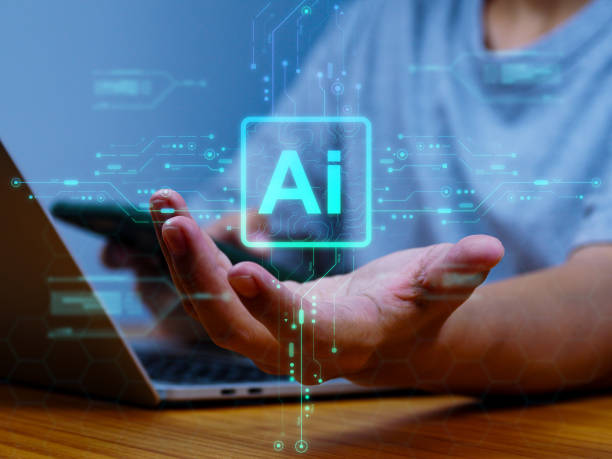
An artificial intelligence robot consists of several main components that, working together, enable it to perform intelligent tasks.
These components are:
- Sensors Sensors collect information about the surrounding environment.
This information can include images, sounds, temperature, pressure, distance, and other physical variables. - Processors Processors process the information collected by the sensors and make the necessary decisions.
These processors typically use artificial intelligence algorithms and machine learning models. - Actuators Actuators execute the instructions of the processors and set the robot in motion.
These actuators can include motors, pumps, valves, and other mechanical devices. - Software Software includes artificial intelligence algorithms, machine learning models, and other programs that enable the robot to perform its tasks.
- Power Source The power source provides the energy required for the robot to function.
This power source can include batteries, solar cells, or other energy sources.
These components work together to form an integrated system capable of understanding its surroundings, learning from experiences, and performing intelligent tasks.
The artificial intelligence robot, as a complex system, requires careful design and development of various components to function effectively and efficiently.
Below is a table to show some of these components and their functions:
| Component | Function | Example |
|---|---|---|
| Sensors | Collecting information from the environment | Camera, microphone, temperature sensor |
| Processors | Processing information and making decisions | CPU, GPU |
| Actuators | Executing commands and moving the robot | Motor, pump, valve |
| Software | Artificial intelligence algorithms and programs | Machine learning, natural language processing |
Applications of Artificial Intelligence Robots in Various Industries
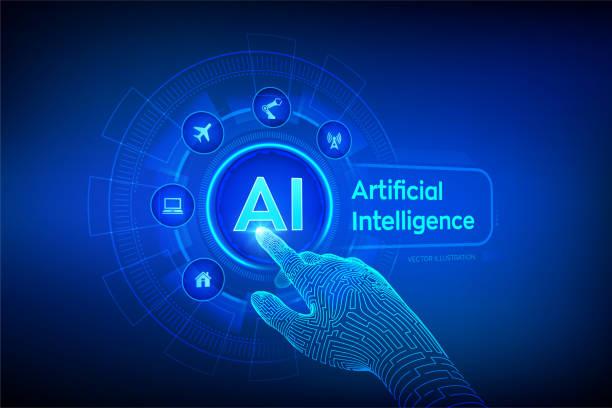
Artificial intelligence robots have widespread applications in various industries and are constantly evolving.
Here are some of these applications:
- Manufacturing Artificial intelligence robots are used in production lines to perform repetitive, dangerous, and precise tasks.
They can help increase production speed, reduce costs, and improve product quality. - Healthcare Artificial intelligence robots are used in surgery, disease diagnosis, patient care, and rehabilitation.
They can assist doctors and nurses in performing difficult and time-consuming tasks and improve the quality of patient care. - Customer Service Artificial intelligence-based chatbots and voice assistants are used to answer customer questions, provide technical support, and solve their problems.
They can help reduce customer service costs and improve customer satisfaction. - Transportation Artificial intelligence robots are used in self-driving cars, drones, and intelligent transportation systems.
They can help reduce accidents, improve traffic, and reduce air pollution. - Security Artificial intelligence robots are used in video surveillance systems, threat detection, and incident response.
They can help increase security and protect property and people.
These are just a few examples of the applications of artificial intelligence robots in various industries.
With the advancement of technology, it is expected that the applications of artificial intelligence robots will become more widespread and diverse in the future.
Artificial intelligence robots have great potential to transform various industries and improve the quality of life.
Did you know that 94% of users’ first impressions of a business are related to its website design? With a professional company website design by **Rasaweb**, turn this first impression into an opportunity for growth.
✅ Attract more customers and increase sales
✅ Create credibility and trust in the eyes of the audience⚡ Get a free website design consultation!
Advantages of Using Artificial Intelligence Robots
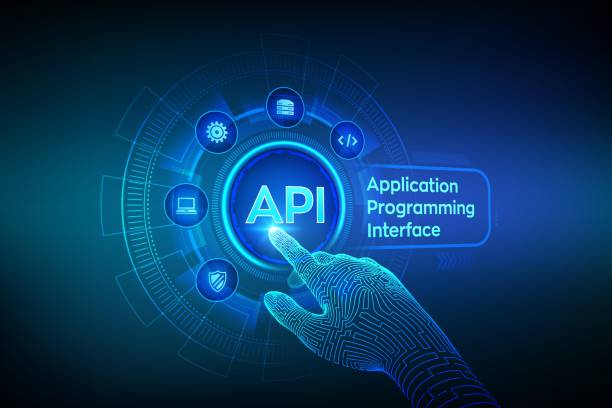
Using artificial intelligence robots has numerous advantages, some of which are mentioned here:
- Increased Productivity Artificial intelligence robots can perform tasks faster and more accurately than humans, helping to increase productivity.
- Reduced Costs Artificial intelligence robots can reduce labor, energy, and raw material costs.
- Improved Quality Artificial intelligence robots can perform tasks with greater accuracy and consistency, helping to improve the quality of products and services.
- Increased Safety Artificial intelligence robots can perform dangerous tasks instead of humans, helping to increase safety.
- 24/7 Availability Artificial intelligence robots can work 24 hours a day, 7 days a week, helping to provide continuous service.
These advantages make the use of artificial intelligence robots attractive to many organizations and industries.
However, it is important to note that the use of artificial intelligence robots requires initial investment, training, and maintenance.
Also, ethical and social issues related to the use of artificial intelligence robots need to be considered.
Despite its many advantages, artificial intelligence robots require careful management and planning.
Challenges Facing the Development of Artificial Intelligence Robots

The development of artificial intelligence robots faces numerous challenges, some of which are mentioned here:
- High Cost Developing, building, and maintaining artificial intelligence robots is costly.
- Technical Complexity Designing and programming artificial intelligence robots requires high expertise and technical knowledge.
- Ethical Issues The use of artificial intelligence robots can create various ethical issues, such as accountability for robot decisions, protection of privacy, and information security.
- Social Issues The use of artificial intelligence robots can lead to job losses and increased social inequality.
- Technical Limitations Artificial intelligence robots still have limitations in some areas, such as understanding natural language and solving complex problems.
Overcoming these challenges requires the joint efforts of researchers, engineers, policymakers, and society.
It is necessary to seriously address the ethical and social issues related to the development of artificial intelligence robots and provide solutions to mitigate their negative impacts.
Despite the challenges, artificial intelligence robots have great potential to transform human lives.
The Future of Artificial Intelligence Robots

The future of artificial intelligence robots is very bright and full of potential.
With the advancement of technology, it is expected that artificial intelligence robots will be used in a wider range of applications and play a more important role in human lives.
Here are some key trends in the future of artificial intelligence robots:
- Increased Intelligence Artificial intelligence robots are constantly learning and improving and will be able to perform more complex tasks in the future.
- Increased Autonomy Artificial intelligence robots will be able to act more independently in the future and require less human intervention.
- Increased Collaboration Artificial intelligence robots will be able to collaborate more effectively with humans and other robots in the future.
- Reduced Cost With the advancement of technology, the cost of developing and building artificial intelligence robots will decrease, making their use more cost-effective for more organizations and industries.
- Expanded Applications Artificial intelligence robots will be used in a wider range of applications in the future, including education, entertainment, elderly care, and space exploration.
As a transformative technology, artificial intelligence robots have great potential to improve the quality of human life and create new opportunities.
However, it is necessary to seriously address the ethical and social issues related to the development of artificial intelligence robots to prevent their potential negative impacts.
Below is a table to show some of these future visions:
| Trend | Description | Potential Impacts |
|---|---|---|
| Increased Intelligence | Improvement of algorithms and machine learning | Robots capable of performing more complex tasks |
| Increased Autonomy | Reduced need for human intervention | Increased efficiency and reduced costs |
| Increased Collaboration | Improved communication between robots and humans | Increased coordination and effectiveness |
| Reduced Cost | Technological advancement and increased production | Greater access to robots for smaller industries |
The Impact of Artificial Intelligence Robots on the Labor Market
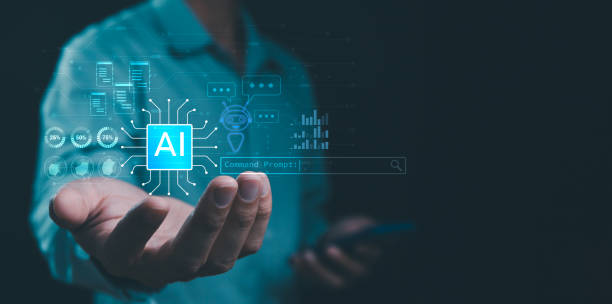
The impact of artificial intelligence robots on the labor market is a complex and debated topic.
Some experts believe that artificial intelligence robots will cause job losses, while others believe that they will create new job opportunities.
The reality is that the impact of artificial intelligence robots on the labor market depends on various factors, including:
- The Pace of Technological Advancement The faster the pace of technological advancement, the greater the likelihood of job losses.
- The Type of Jobs Jobs that are repetitive, routine, and require low skills are more at risk of being replaced by artificial intelligence robots.
- The Readiness of the Workforce A workforce that has the skills necessary to work with artificial intelligence robots is less at risk of losing their jobs.
In general, it is expected that artificial intelligence robots will change the nature of jobs and create a need for new skills.
For example, in the future, there may be a need for specialists who can design, program, maintain, and repair artificial intelligence robots.
There may also be a need for specialists who can collaborate with artificial intelligence robots and perform tasks that require human intelligence, creativity, and empathy.
Artificial intelligence robots require a trained workforce.
Are you frustrated with the low conversion rate of your online store?
Rasaweb’s professional online store design is your definitive solution!
✅ Increase your sales and revenue
✅ Exceptional user experience for your customers
⚡ Get a free consultation now!
Ethical Issues Surrounding Artificial Intelligence Robots
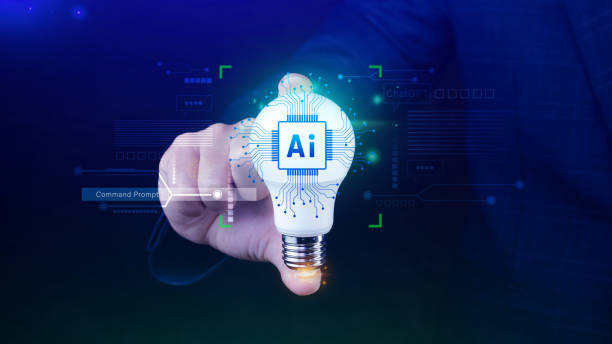
The development and use of artificial intelligence robots raise various ethical issues that require careful attention and consideration.
Some of these issues include:
- Accountability Who is responsible for the decisions of artificial intelligence robots? If a self-driving car has an accident, who will be responsible?
- Privacy Artificial intelligence robots can collect a lot of information about us.
How can we protect people’s privacy from artificial intelligence robots? - Security Artificial intelligence robots can be hacked and misused.
How can we protect artificial intelligence robots from cyber attacks? - Bias Artificial intelligence robots can learn human biases and apply them in their decisions.
How can we prevent bias in artificial intelligence robots? - Transparency The decisions of artificial intelligence robots should be transparent and explainable.
How can we ensure that artificial intelligence robots make decisions fairly and without discrimination?
These ethical issues require careful discussion and consideration by experts, policymakers, and society.
It is necessary to establish laws and regulations to regulate the development and use of artificial intelligence robots to prevent the misuse of this technology.
Artificial intelligence robots should serve humans and should not harm their rights and freedoms.
How to Prepare to Enter the Field of Artificial Intelligence Robots?
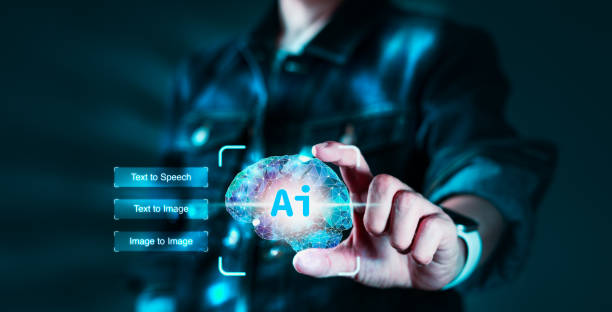
If you are interested in entering the field of artificial intelligence robots, you can take the following steps:
- Learn Programming Programming is one of the essential skills for working in the field of artificial intelligence robots.
Python, C++, and Java are among the popular programming languages in this field. - Familiarize Yourself with Artificial Intelligence To work in the field of artificial intelligence robots, you need to be familiar with artificial intelligence concepts and algorithms, such as machine learning, natural language processing, and computer vision.
- Familiarize Yourself with Robotics To work in the field of artificial intelligence robots, you need to be familiar with robotics concepts and principles, such as mechanics, electronics, and control.
- Participate in Courses and Workshops Participating in training courses and workshops can help you acquire the skills necessary to work in the field of artificial intelligence robots.
- Undertake Practical Projects Undertaking practical projects helps you apply your knowledge and skills in practice and gain experience.
- Read Articles and Books Reading articles and books related to artificial intelligence robots helps you stay informed about the latest developments in this field.
With effort and perseverance, you can acquire the skills necessary to enter the field of artificial intelligence robots and have a successful and exciting career in this field full of potential.
Artificial intelligence robots require high expertise and technical knowledge. For example, you can get more information about

